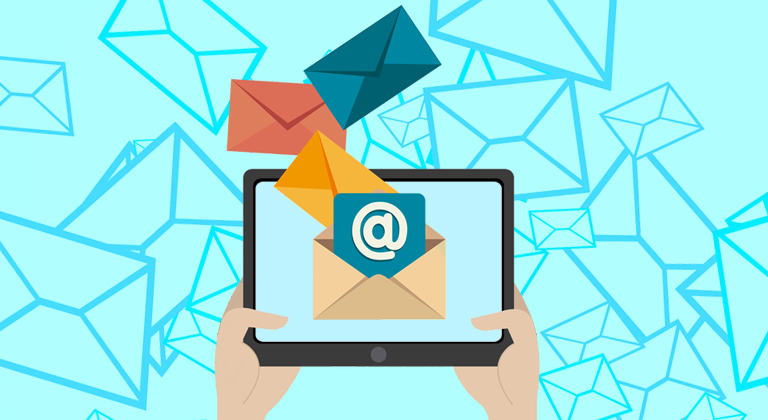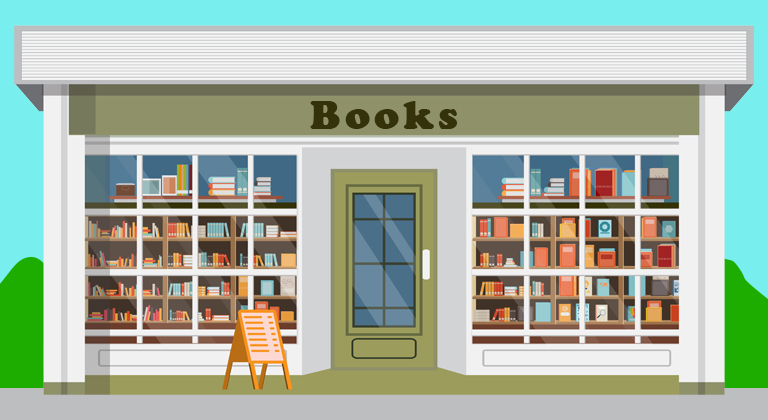Choose an Email Marketing Service That Works for You
Most independent authors are well aware of the importance of a newsletter and the benefits of using a mailing list to handle it, but a quick google search will result in plenty of different email marketing services to choose from. Unfortunately, it’s not a one-size-fits-all sort of problem, since every author has different needs. Luckily, author Annabeth Saryu has already done a lot of research into what factors need to be considered, and she’s put it all together here to make it easier to determine how to pick the service that will work best for you.
Regardless of where an author is in their career, they eventually encounter a piece of universally accepted advice: build your mailing list. Your mailing list not only consists of your most avid readers, but if cultivated properly, also includes your most dedicated customers.
While many experts on author marketing stress the value of an email list, few discuss the current needs of authors. Most commonly, they express a preference without any mention of non-technical factors to consider.
Trying to apply someone else’s solution to a problem you may or may not have encountered in your own author career can result in a choice that costs time, money and frustration.
That’s why the most important thing is to understand all of the factors that go into the decision of which email marketing service to choose so that you can select the one that works best for your needs. Thus, instead of recommending particular email marketing services, let’s focus on what you need to consider when making your choice, such as cost, integrations, your personal career journey and technical support needs.
A word about Email Marketing Services
Email marketing services are a lot like hairbrushes: all serve the same basic function but finding one that meets your personal needs makes them much more effective.
CAVEAT #1: There are some services that market themselves as CRMs (Customer relationship management) tools. Unless you’re an author who sells (A LOT ) direct from your website, you can avoid these marketing services.
CAVEAT #2: If you are heavily invested in your own ecommerce platform (direct sales of books, courses, subscriptions, merchandise), some of these considerations won’t apply to you.
‘Typical’ author business tactics
Most authors, trade or indie, sell their books, eBooks, and audiobooks on the major retail platforms, and their links may point directly to those, or to their own websites and lead magnets. An author’s newsletter typically drives sales on these platforms by announcing new releases, sales and special offers. Those that use paid advertising often direct readers to sales pages on retail sites, or landing pages with universal book links, rather than their own homepages. Many authors also use lead generation tactics such as paid ads and back matter to direct readers to lead magnets that require mailing list sign-up.
Take a look at your website platform (WIX, WordPress, other), your book delivery system (Bookfunnel, Prolific works, etc.), social media presence, and ads usage. Also include any other tool you use to capture subscribers, such as Rafflecopter or KingSumo. With this list in hand, let’s take a look at things you should consider.
Integrations
Simply put, integration is a term that describes the ability of applications to work together. It typically comes in the form of a plugin that connects an application directly with your email marketing service and allows actions to occur automatically.
Once applications are integrated, you can put email collection, authentication and lead magnet delivery on autopilot. You can also tag subscribers, assign readers to selected lists, use autoresponders or send special campaigns.
For the most part, anything your email service does can be done automatically through an integration.
No more manual uploading and downloading of CSVs ( and no more forgetting either). Communication with readers is more immediate and better targeted. Integrations also make it easier to understand where your subscribers are coming from, and which efforts yield the best response.
You want your email marketing service to integrate with as many of your reader collection tools as possible. With good planning and awareness, it’s possible to select providers that integrate with all your tools saving you time, money, and frustration down the line.
A note about Wix
Wix is a website development and hosting service that’s easy to use and offers some free services, as well as in-app upgrades for additional costs. Many authors love Wix. Others sometimes start with it and later switch to different platforms. But if you’re a Wix fan beware: very few email marketing services offer integrations to the platform, and those that do aren’t recommended by author gurus. Check out which of the services integrate with Wix here.
If you choose an email service that doesn’t integrate with Wix, you’ll need to find a work around. This involves a bit of coding or using a third-party integration service like Zapier.
Cost
Make no mistake, cultivating a newsletter audience will take time, which can make your email marketing service an ongoing, long term expense. So while ‘free’ accounts may seem pretty enticing at first, they’re not without their downsides. Specific considerations:
Many free accounts have a ticking clock
The typical time limits are 14, 30 and uncommonly, 60 days. They often require a credit card to begin the free trial period, which is automatically charged when the trial ends unless you cancel first, so make sure to set a reminder.
Accounts with ticking clocks are generally bad for new authors in the process of creating their author platform and who don’t have unlimited time to focus on the ins and outs of their particular service provider while trying to also understand the basics of email marketing in general. It’s just not long enough to make an informed decision.
Ticking clock accounts work best for established authors shopping for a new email marketing service provider with greater functionality or who are facing a big price jump with their current provider. Those time frames can work, but if you’ve got a big list, it’s worth contacting your new service provider about extending the trial period and/or support for migrating your list.
‘Forever free’ accounts typically aren’t full featured
List size restrictions, number of emails sent per month, limited technical support, and access restrictions on templates, segmentation, integrations or a/b testing are typical sacrifices that come with free accounts. If you’re keen to try an email marketing service but the free version doesn’t have the features you want, consider checking out the refund policy to see if you can try the full featured version within the refund period.
Cost increments as list size increases
Another important consideration is how fast an email marketing service’s costs go up as your list size increases.
If you’re in a popular genre like romance or thrillers, and you do lots of list-builders such as Bookfunnel promos or paid list building services like Ryan Zee or LitRing, you can easily gain 100s of subscribers with a single promo.
These kinds of increases make short work of free accounts, whose list size limits are typically 500 – 1000 subscribers.
If you’re anticipating faster list growth, it’s worth comparing pricing structures among the various providers. Most pricing structures include a big bump somewhere, and it depends on the providers’ composition of its most profitable customers.
For example, if your monthly costs double once you exceed 10,000 subscribers, being stuck at 10,003 for years with that service provider will sting. Conversely, if you’ve got a slow growing, smaller list, try to avoid providers that charge premiums for smaller list sizes and then become competitive at larger numbers. When your list size hits a plateau, it’s a good time to compare features and prices based on your actual list size, growth efforts and feature needs.
Your personal author journey
Some authors come from trade backgrounds and enjoy established audiences eager to buy their self-published books. Others are well-known in different fields and have a ready list of clients and followers who become customers with little effort. Some entered on the ground floor of kindle unlimited and remained top of the heap. Others start with no audience at all and must build from the ground up.
Where you are dictates how much work you’ve got ahead to build an audience.
But no one on my mailing list ever buys anything!
This is a common cause of night terrors among authors who find their email list isn’t the cash cow promised them. One reason for that comes from where you are on your author journey.
The more giveaways and promos you participate in to gain sign-ups, the less familiar and invested your mailing list will be in your books. Which means you’ll have to work much, much harder to convert them into buyers. It can take months, sometimes up to a year.
Think about it: if a reader downloaded your magnet with hundreds of other magnets during a promo, it could be months before they read your book. In the meantime your email service keeps billing you monthly based on your ‘subscribers.’ Subscribers taking their time to become buyers.
There many gurus out there with books and how-to courses for email marketing, including Andre Chaperon and Tammi Labrecque. Numerous courses on Udemy, even people on Fiverr, who will help convert subscribers into customers. But until that happens, you’ve still got monthly email marketing bills to pay and books to write.
Unconventional options
If cultivating a paying audience is a long game for you, consider a service provider that bills for the total number of emails sent per month, rather than subscriber count. This can be helpful if you’ve got a list in the 3,000-10,000 range that’s taking a while to convert and you only send a few campaigns each month.
Another option is an email marketing service provider that allows you to pay-per-campaign. Many successful authors have cultivated big, happy, highly engaged Facebook groups where they devote considerable time and don’t want to invest in a regular marketing service provider. There are also authors who send newsletters only for sales or new releases. A pay-per-campaign option can be pricey, but if your list size exceeds the limits of free plans and you send infrequently, this might be a good option.
Technical Support
Never underestimate the value of your time.
Do you love learning new software, troubleshooting technical problems, or coming up with creative solutions to keep your author business afloat? Maybe you’ve got a generous bankroll and can hire help, or a spouse who’s a tech whiz, or a day job that makes you an ads expert?
Or not.
Time is valuable. As authors it’s probably our most valuable commodity. Professionally speaking, the biggest competitor for our precious writing time is often marketing and technical issues related to marketing efforts.
The caliber of technical support varies widely by provider and plan, so it’s something to consider when making your selection, especially if troubleshooting technical issues isn’t your thing.
Just remember…
If you find an email marketing service that you like, embrace it and move on. You’re not doing anything ‘wrong’ if it works for you. It’s okay if it’s not the one recommended by that best-selling superstar author you follow. A good service provider allows you to capture email addresses, connect with your readers, and work within your own personal author ecosystem— without heartburn or hair loss.












Thanks so much for this blog and the info you’ve provided. You’ve broken down not only the concerns for some authors, but also the fundamentals of what everyone should look for in a platform.
Glad you found it helpful